The weapon of the first world war - machine gun "Lewis"
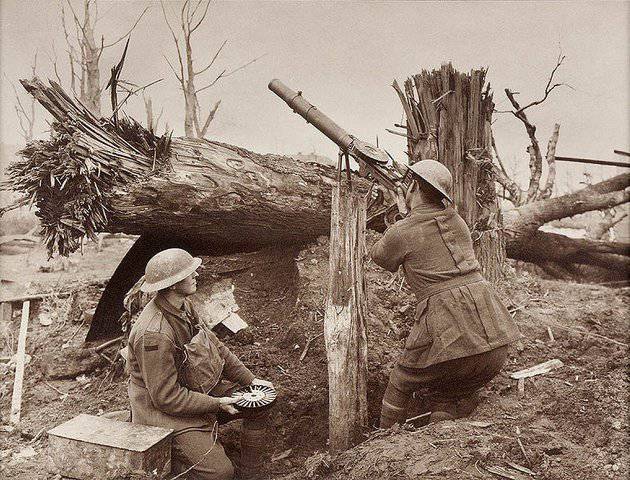
History machine-gun
Everyone who sees this light machine gun will immediately recognize it, since very often this particular machine gun is shown in films about the First World War and even the Second World War.
After all, it is not for nothing that they demonstrate it in films, because thanks to the simplicity and reliability, low weight characteristics, high rate of fire, the machine gun quickly won the hearts of many military states and at that time enjoyed immense popularity. All modifications weapons had success and only added fame to the machine gun.
The designer of the machine gun is Colonel Isaac Lewis of the US Army. At one time, having been educated at West Point, in 1911, he headed the artillery school of Fort Monroe. Managing school and doing research and development of weapons, is widely recognized as an expert in electromechanics and mechanics. Before retiring, Colonel Lewis chose the path of the consultant of the company AAC - Automatic Arms Company.
Working as a consultant, Colonel Lewis continues to develop weapons and is working on his own project of a lightweight machine gun, the mechanisms of which would be set in motion through the use of force of powder gases, used ammunition.
The company "Automatic Arms Company" acquires all rights to the original machine gun, the designer of which was Dr. Semuel McClean. It is from this machine gun that the history of the Lews machine gun begins. Colonel Lewis was very interested in this machine gun, and he uses many technical and design solutions to create his own machine gun. The company "AAS" gives Lewis a controlling stake and leadership over the mass production of the machine gun and its distribution for the right of the company to produce its machine gun.
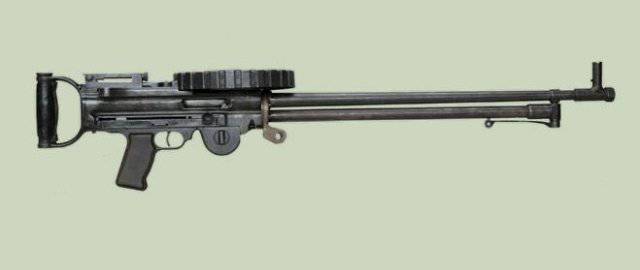
Machine gun device
Just a couple of years Lewis designed a machine gun that has a disk magazine and air-cooled barrel. The mechanics of the machine gun worked in automatic mode thanks to the technical solution of the removal of powder gases. After the shot, the powder gases exited through the stem holes and with their pressure displaced the piston to its original state, while returning, the piston cocked the return spring. Also, the rod stand moved the bolt, removing the lugs from the groove of the bolt box. The further stroke of the shutter and piston pushed the ejected sleeve, which as a result of this movement was thrown to the side by the reflector. The gate ledge, acting on the feeder, opened the magazine, and the next cartridge was fed to the receiving window.
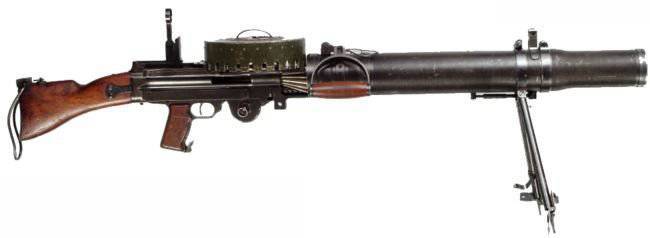
After the mechanisms completely returned to their original state, the return spring, unwinding, quickly shifted the bolt with the stem forward. In this case, the bolt picked up the cartridge and sent it to the chamber. The suppressor was shifted to the right and held by the next ledge of the store. The rod stand began to move along the bolt notch, the bolt turned, and the lugs entered the grooves, the drummer smashing the cap, fired another shot.
The main problem of automatic weapons is the strong heating of the barrel when conducting intense fire. Lewis has developed his own air cooling system. He placed the barrel of his machine gun in a radiator made of aluminum and covered it with a cylindrical casing.
When firing from a machine gun, powder gases coming out of the barrel holes at a decent speed pulled ordinary air into the casing, and he ventilated the aluminum radiator, taking the heat with him. But even such a decision was not a panacea, the queues longer than 25 shots still overheated the machine gun, and I had to take short breaks when shooting. The magazine in the form of a disc had a capacity of 47 ammunition, which a light machine gun would shoot in 6 seconds. The store was easily changed, and such a quantity of cartridges in the store was considered sufficient.
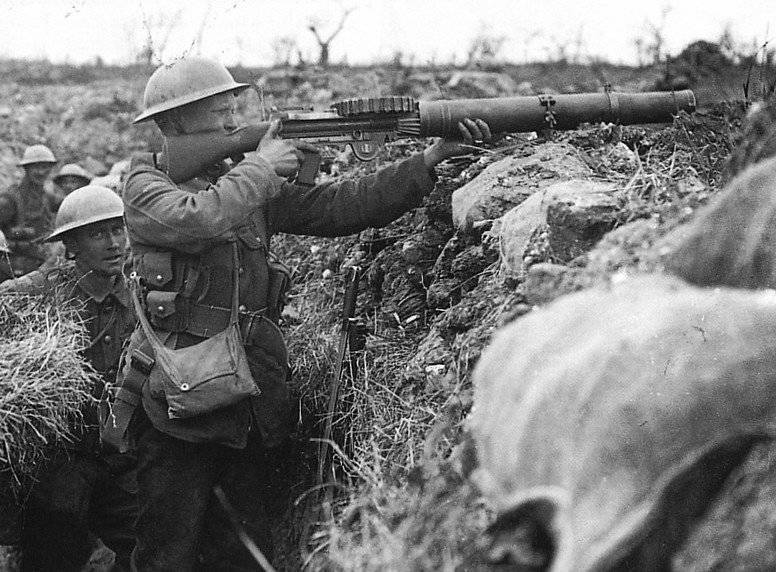
Road to recognition
While serving in the US Armed Forces, Lewis filed applications for his military inventions many times, but he did not find a response from the command. As in any other country, the invention of the military command is not popular, and therefore Lewis decided to approach the problem from the other side.
He asks his friend, Captain Chandler, commander of the reconnaissance air corps, to try the machine gun in the air. Chandler draws Lieutenant Milling to the testing of the Wright biplane pilot.
On the tests of the machine gun in the air Lewis reports a group of officers and the press.
In early June, 1912, the biplane conducts successful tests of the machine gun. But although the press gave positive reviews about the Lewis machine gun and the command made it possible to perform official tests, they do not accept the machine gun, since the US Artillery Directorate had already approved the use of the French machine gun Bene Mercier in the army. In many respects, it was inferior to the Lewis machine gun and had the usual inconvenient ribbons for cartridges. After that, Lewis leaves the army and moves to Europe.
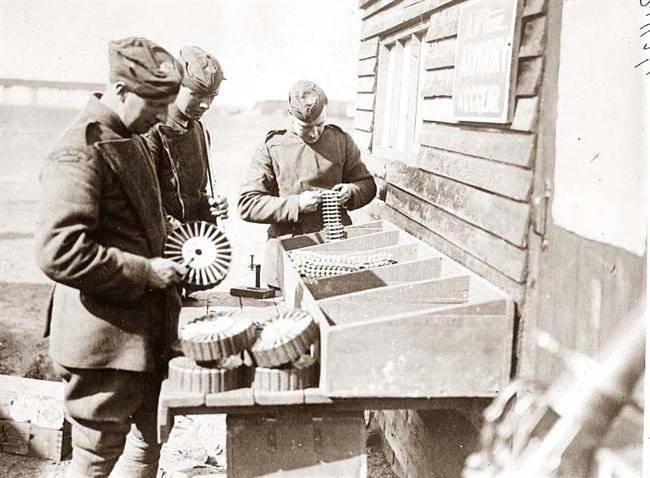
The machine gun with a disc-shaped shop interested the Belgians. After successful demonstrations and trials, Lewis signs an agreement with the Belgians that creates a new company, Armes Automatic Lewis, to manufacture Lewis machine guns. But it soon turns out that only the British company “BSA” will be able to produce this machine gun, with which they conclude an agreement on the production of the main components of the machine gun.
With the help of BSA, Lewis demonstrates the use of a machine gun from the air. Biplane specially retrofit additional armchair for the machine gunner. At the end of November 1913, a machine gun applied from the air hits a target from a height of 120 meters. More than half of the disc successfully hit the target.
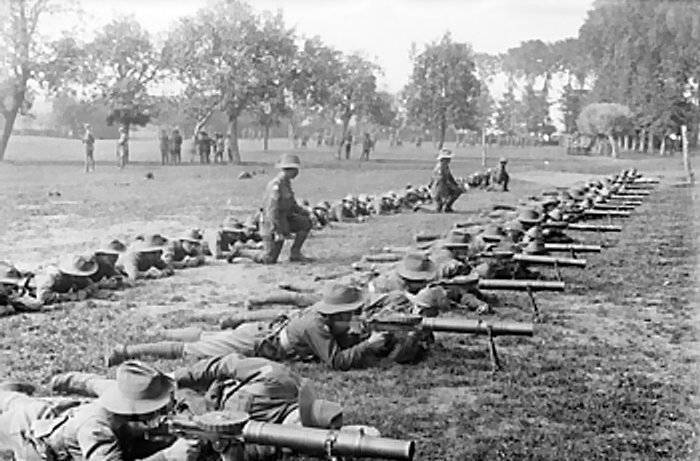
After demonstrating the capabilities of the machine gun, the company "BSA" receives small trial orders from the military of Russia, Belgium and England. Despite the significant heating of the barrel during intensive shooting, the machine gun is rated positively by experts. Belgium in 1913 takes machine gun into service with its army.
Although the air forces of England showed interest in the machine gun, they showed traditional English caution and were not in a hurry to order the machine gun. Therefore, Belgium and Russia won the first installments. Foreseeing the war in Europe, BSA decides to increase production capacity and orders a batch of machine tools in the United States.
Just before the start of the war, in the middle of 1914, England first orders a batch of 10 units and in a couple of weeks there are still about 50 machine guns. After the outbreak of hostilities, the company received an order for 200 units of machine guns.
But after the Belgian military units, armed with infantry models of the Lewis machine gun, successfully repelled the attacks of superior German forces, the demand for machine guns grew exponentially.
BSA could not cope with such a flow of orders, and then they ordered 12 thousands of machine guns from the American company Savage Armz Company. At the end of 1915, the factory finally arrived in Birmingham, which was able to produce approximately 300 machine guns per week.
Modifications of the machine gun.
The first modification touched the aviation machine gun. It replaced the butt handle type "Maxim". The following upgraded barrel machine gun, however, it affected only the casing of the radiator, which prevented to produce firing. Due to the good blowing of the machine gun at a height, the casing is removed from the air gun. Bag-shaped containers are added to trap the spent cartridges, which damaged the skin of the aircraft during discharge.
Also, by the year 1916 they increase the capacity of the store for the convenience of shooting in the air, the disk store has become more massive and can hold 97 ammunition. The store itself was supplied with a handle, for quick replacement with one hand.
In the 1916 year, given the various improvements, the company BSA begins production of an upgraded version of the Lewis Mk.II.
Around the same time in England create a mounting fixture to install a machine gun on the plane. The Fortress Lafetted was made in the form of an arched rail, where the machine gun was moved back and down. These carriages were equipped with English "RAF SE.5a".
In Russia, too, there is a carriage for fastening a machine gun on an airplane, it was distinguished by the fact that the backward movement was made on a hinge.
With 1915, the machine gun becomes the de facto standard for military aircraft.
During operation, it turned out that the machine gun had acquired a number of shortcomings, such as freezing grease at low temperatures, required the barrel to be cleaned after shooting 600 ammunition;
In 17 was completed naval Lewis machine gun, which led to the serial production of the machine gun Lewis Mk.III. In this modification, they reduced the weight of the machine gun and increased the rate of fire. The third Lewis became the most common weapon for arming combat aircraft and remained so until the outbreak of World War II.
The United States and Russia used 7.62 mm ammunition for firing machine guns, while Italy, France and Japan used 0.383 mm 7.7 ammunition.
Since the rate of fire of the machine gun increased to 850 rounds per minute, without improving design solutions, the damage and failures of the machine gun greatly increased, and overcoming great heights by aircraft increased the unsolved problem of freezing lubrication.
The machine gun quickly lost its appeal and by the end of the thirties was considered obsolete weapons.
But despite everything, the machine gun was very often used on the fronts of the Second World War. German troops often used this machine gun in their units, although they had newer weapons.
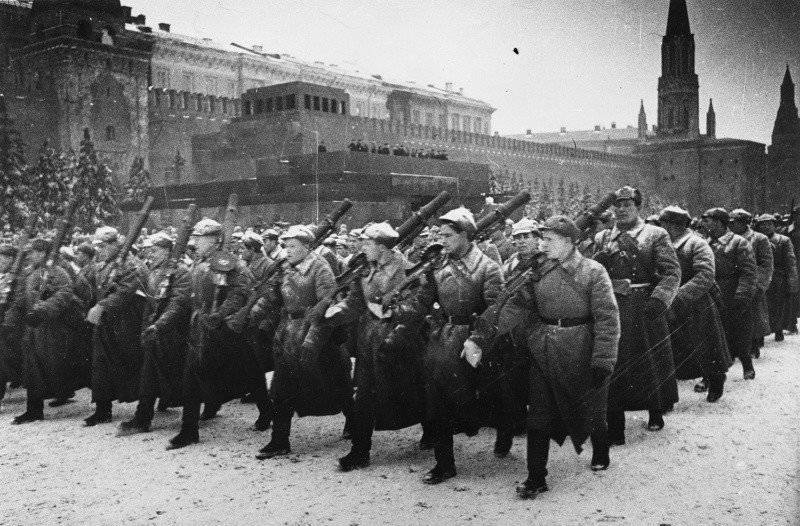
Key Features:
- Option Lewis Mk I-II and Lewis Mk III;
- length 1.3 meter 1.1 meter;
- stem 0.61 meter 0.61 meter;
- rate of fire to 550 v / m to 850 v / m;
- weight 11.5 kg 7.7 kg;
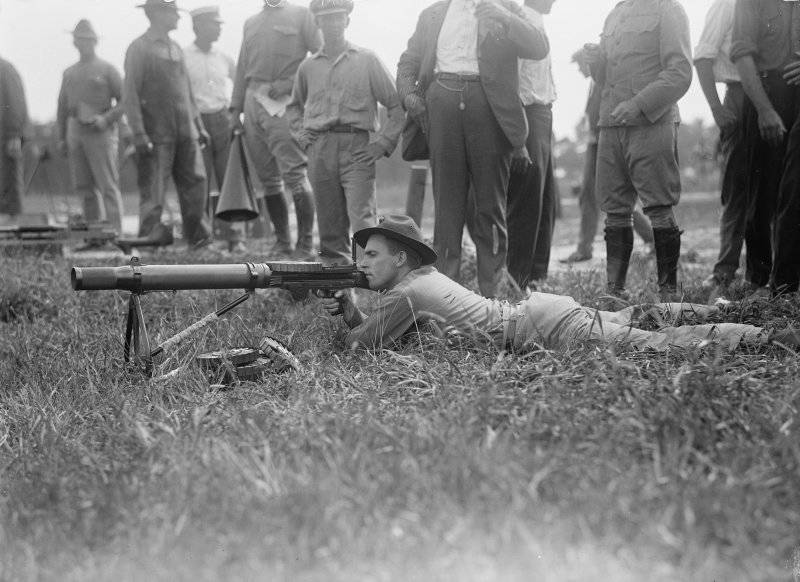
Information